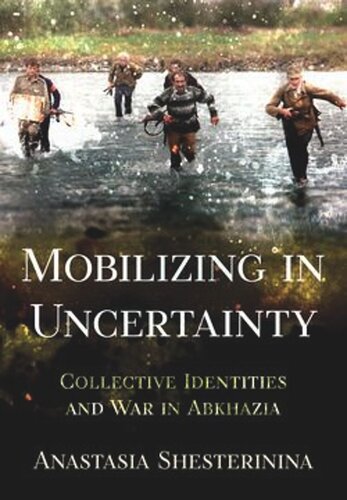

Most ebook files are in PDF format, so you can easily read them using various software such as Foxit Reader or directly on the Google Chrome browser.
Some ebook files are released by publishers in other formats such as .awz, .mobi, .epub, .fb2, etc. You may need to install specific software to read these formats on mobile/PC, such as Calibre.
Please read the tutorial at this link: https://ebookbell.com/faq
We offer FREE conversion to the popular formats you request; however, this may take some time. Therefore, right after payment, please email us, and we will try to provide the service as quickly as possible.
For some exceptional file formats or broken links (if any), please refrain from opening any disputes. Instead, email us first, and we will try to assist within a maximum of 6 hours.
EbookBell Team

5.0
110 reviewsHow do ordinary people navigate the intense uncertainty of the onset of war? Different individuals mobilize in different ways—some flee, some pick up arms, some support armed actors as civil war begins. Drawing on nearly two hundred in-depth interviews with participants and non-participants in the Georgian-Abkhaz war of 1992–1993, Anastasia Shesterinina explores Abkhaz mobilization decisions during that conflict.
Her fresh approach underscores the uncertain nature of the first days of the war. Georgian forces had a preponderance of manpower and arms at that time. As Mobilizing in Uncertainty demonstrates, and in contrast to explanations that assume individuals know the risk involved in mobilization and make decisions to mobilize based on that knowledge, the Abkhaz anticipated risk in different ways in the uncertainty affected by earlier experiences and by social networks at the time of mobilization.
What Shesterinina uncovers is that to make sense of the violence, Abkhaz leaders, local authority figures, and others relied on shared understandings of the conflict and their roles in it—collective conflict identities—that they had developed before the war. As appeals traveled across society, people consolidated mobilization decisions with small groups of family and friends and based their actions on whom they understood to be threatened. Their decisions shaped how the Georgian-Abkhaz conflict unfolded and how people continued to mobilize during and after the war.
Through this detailed analysis of Abkhaz mobilization from prewar to postwar, Mobilizing in Uncertainty sheds light on broader processes of violence, which have lasting effects on societies marked by intergroup conflict.